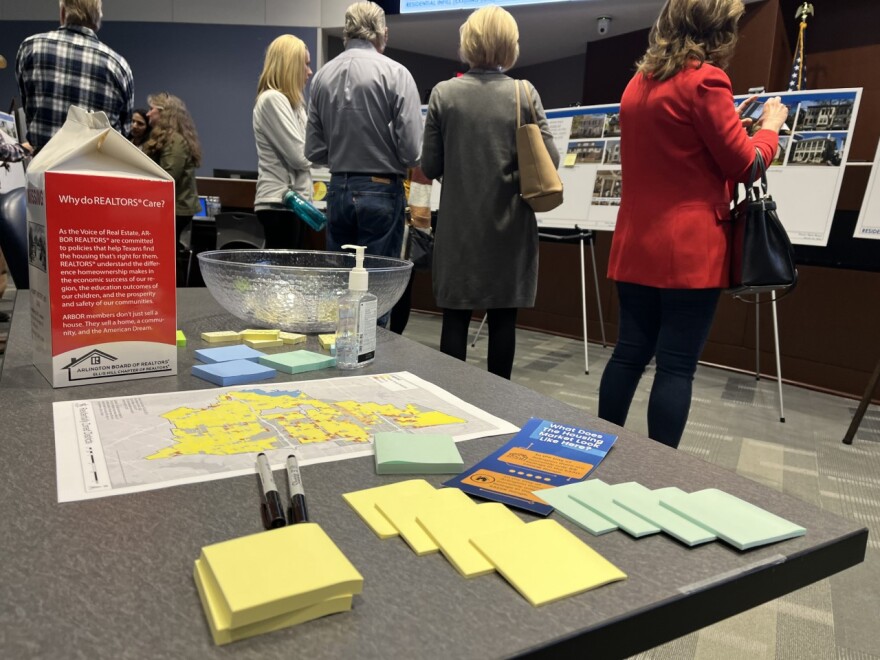City employees and council have spent months discussing policy changes that would address new housing trends, the need for redevelopment and other issues affecting both Arlington and towns across the United States.
However, criticism around adding new housing types to the city including duplexes, cottage courts and triplexes drowned out redevelopment discussions, said Gincy Thoppil, city planning and zoning director.
Her department, at the direction of city council during an Aug. 23 meeting, will take “a little bit of a pause” to get more feedback from residents and adjust their proposals.
“We still have those issues and nobody’s denying that,” she said. “We just need to think of a different way to approach the issue and how it actually fits in Arlington.”
City council members during an Aug. 23 afternoon meeting told planning staff to return to council in the next several months and start fresh.
Both conversations surrounding missing middle and infill development, or redeveloping existing properties, are central to Arlington's strategy to contend with approaching buildout.
Under 4,000 acres of property in the city is considered vacant and developable according to city land use data. City employees and elected officials have mulled ways to compel businesses to take on redevelopment.
Creating new and more affordable housing options was both part of the city's Unity Council recommendations and 2015 Comprehensive Plan.
Rebecca Boxall, District 5 council member, said the intensity of the feedback did not surprise her. Boxall is an architect whose district represents downtown and east Arlington.
“Change is hard. In Arlington, there’s a lot of opposition to large, multi-unit apartment complexes,” she said. “But what I found through this process is there’s a lot of opposition to basically any kind of new housing, even single-family housing.”
The missing middle discussion echoes ongoing discourse in cities across the United States, as municipalities address rising rental and home ownership costs and add back a housing stock that was more common before World War II.
Hannah Lebovits, an assistant professor at UT Arlington, says that won’t happen unless local governments simplify their processes that normally make larger housing types more lucrative to developers.
“If they’re going to do the work to get all of the approvals and go through the entire process, it makes more sense for them to build things that are higher density than what we would call ‘missing middle,’” Lebovits said.
Lebovits understands the fear around missing middle housing and policy changes. However, new housing types can fit into the community and add both value and investment to established neighborhoods, she said.
“They’re not two different sides of the coin,” she said. “New buildings can also feel good and feel comfortable and feel stable and fit into your neighborhood. That’s exactly what missing middle offers, is buildings that look very similar to what your home looks like and feels like your home, but they have a couple more units than what your average lot would get.”
Thoppil said her department would likely break up the two topics: housing and redevelopment, if or when the city brings the discussions back to residents.
“We tried to (separate the topics), but it didn’t work because it was still part of a bigger project,” Thoppil said.
Boxall says she would like to see planning staff provide more examples of missing middle and mixed commercial and residential areas done well, including Arlington’s master-planned community Viridian.
“It wouldn’t be as scary as it is in theory when you’re just talking about it on paper,” she said. “I think if they saw some good examples of infill projects, I think they would be very supportive.”
Though the policy talks are on hiatus at city hall, Thoppil said people are still approaching her department to discuss how the policies could impact their neighborhood, or with ideas about areas ripe for redevelopment.
“All those conversations are happening, which is what I think council wanted: to kind of take a pause and let that start happening from the citizens’ side,” Thoppil said.
Got a tip? Email Kailey Broussard at kbroussard@kera.org. You can follow Kailey on Twitter @KaileyBroussard.
KERA News is made possible through the generosity of our members. If you find this reporting valuable, consider making a tax-deductible gift today. Thank you.





